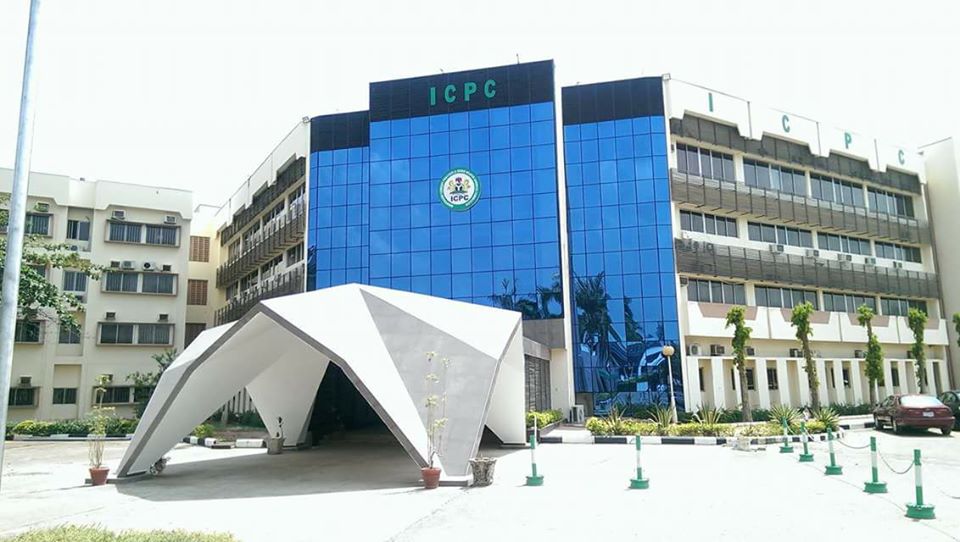Any discussion on corruption normally whips up emotions, anticipation, irritation, sadness, and compunctions. The corruption question and its impacts continue to dominate family discourse, community consultations, village square chats, places of worship, cabinet meetings, parliamentary sessions, national conferences and seminars. Sadly, only a sizeable few of such conversations proffer suggestions on how to prevent it.
Corruption is an irrational behaviour with grave costs on the individual, people and government and undermines every aspect of development, mostly the political and socio-economic growth of society. It is ubiquitous, irrespective of region, culture, tribe and religion. Corruption and governance are perceived to be innately fused both receiving continual adhesion from each other. When systemic and prevalent, corruption guides public policies, determine state contracts, forge appointments, sway discretions and judgements, establish projects, launch programmes and obliterate sanctions. The most efficient way of controlling or checking corruption, as several authorities have suggested, is to strengthen vulnerable systems, procedures, processes and flush out sleazy practices. This includes suggestions that institutions should be reviewed constantly along with officials manning them.
Notwithstanding where systems are strong or impervious, corrupt officials create and instigate weaknesses and opportunities for abuse and corruption. This highlights the essence for continuous system review and audit to ensure that particular processes and procedures are not broken by officers overseeing them.
Preventing Corruption
Anti-corruption literature and policies are replete with strategies to combat corruption. Approaches recommend employing culture as a purveyor to control corruption; increasing controls by audits and performance bench marking; institutional reforms enhancing transparency and accountability; strengthening anticorruption agencies and effective investigation and prosecution. Despite the colossal literature from academics, policy makers and civil society, corruption remains effervescent.
Enforcement against corruption takes place after the commission of the crime and with dire costs of the corrupt act on the society particularly the poor. The costs of enforcement and recovery are colossal, and criminal elements are compromising law enforcement efforts; this insight impels the imperative of building formidable systems that envision preventing corruption with irrepressible structures that hold off intensities and vagaries of corruption.
Short or long term, preventing corruption saves time, expenses and strains of enforcement; prevention is sustainable as it thrives on civil vigilance and support. Prevention corresponds and complements enforcement.
The United Nations Convention Against Corruption in 2003 specifically demands that states put up adequate statutory policies and programmes to prevent corruption (Chapter 2) and also fight corruption through criminalization and enforcement measures (Chapter 3). Rightly as the Independent Corrupt Practices and Other Related Commission (ICPC) has emphasized in several fora, it is imperative to maintain a balance between prevention and enforcement and not discard one for the other.
Preventive Tools
One peculiar aspect of the ICPC Establishment Act – a legislation that predates the United Nations Convention Against Corruption (2003), is the patent provisions on preventive measures against corruption. Though section 6(a) of ICPC Establishment Act provides for enforcement, section 6(b) – (d) provides for the examination and study of systems, procedures, and practices that may be permitting corruption, and advice government and officials to review such skewed systems, procedures, and practices. ICPC employs this provision as authority to identify and detoxify crooked public systems and procedures with advisories to relevant and concerned public agencies and officials realizing that these weak systems are cesspools for corruption.
These tools include the System Study and Review (SSR), Corruption Risk Assessment (CRA), Ethics and Compliance Scorecard (ECS), Corruption Monitoring and Evaluation (CME) etc. These tools have become the cornerstones of the Commission’s operations and have helped to check fraud and theft of public funds and reduce opacity and shaded practices as public systems are opened up for public scrutiny.
The focus here, however, is on two of ICPC’S preventive tools – the System Study and Review (SSR) and the Corruption Risk Assessment (CRA) under sections 6 (b) – (d) of ICPC Establishment Act.
System Study and Review
Systems study as the name implies inquire into government systems, practices and procedures to identify vulnerabilities permitting corruption and advise a review. It may be profound as procurement in huge projects covering construction of dams, stadia, and social investment programme, while also assessing granular and isolated issues as discretionary powers, poor record keeping, assets regularity, personnel appointments and promotions, etc. This tool is mostly compelled by reports, complaints and realities of broken public systems demanding the Commission’s intervention.
Since 2003, the ICPC has deployed the SSR in numerous public ministries and parastatals. Agencies are selected not in particular order but may include fallouts from findings made from investigation conducted, reports from the media, petitions and complaints from the public and the Commission’s direct intelligence reports.
Methodology adopted may require public hearing to gather opinion, concerns, complaints and suggestions; training sessions may be conducted to sensitize staff, stakeholders and the public on the assignments to prompt and elicit their submissions.
Objectives of the study would include but not limited to identifying vulnerable areas, which make the institution susceptible to corrupt tendencies; design and facilitate implementation of corruption controlling recommendations; empower staff against corruption; promote awareness on the essence and functions of Anti-corruption and Transparency Units (ACTUs).
Also, the System Study and Review on Capital and Personnel Budget Implementation, conducted in 201 Ministries Departments and Agencies in 2019 made several disclosures among other infractions that include appropriation of funds in excess of actual personnel cost suggestive of inflation of nominal roll; use of pension and health insurance budgets for unrelated payments. Others include failure to remit deducted taxes, Virement, and use of capital project funds for overhead costs or agency’s running costs.
System study presents the institution with reports of its weaknesses and vulnerabilities militating against effectiveness and productivity and recommends actions to stem the drift.
Corruption Risk Assessment
Risk assessment comes in a variety of forms – financial, cultural, environmental, forensic, health, criminal justice etc. Almost every form of human endeavour has some form of risk assessment or the other. The common decimal of these consist of – identifying risks that may be injurious to the institution or its personnel; detect object or subject that may cause the risk; assess the risks and determine action to take; review the risk assessment and ensure implementation of suggestions.
This analytical and diagnostic tool focuses on potential for risks and not the perception, existence or extent of corruption. It is disposed to evaluating likelihood of corruption occurring and the impact this would have on an institution should it occur. However, the fact that a threat exists may not warrant the conclusion that the organization is at risk.
A risk assessment identifies immanent threats and determines whether those threats actually relates to the organization, its operations, management and existence and mainly, if it could be detrimental to the organization. Indeed, as President Muhammad Buhari noted, “Corruption Risk Assessment… places a premium on prevention as an effective complement to enforcement in the war against corruption.”
Appreciating the crucial nature of corruption risk assessment in the fight against corruption, ICPC with the support of donor agencies at various times trained 69 and later 42 assessors drawn from the Commission, civil society organizations and other anti-corruption agencies.
The methodology of corruption assessment include identifying risks, listing the risk factors and schemes; collection of data, identifying risks specific to the agency, rating probability and potential impact of each corruption scheme, presenting mitigating actions, controls and processes, calculating residual or unforeseen risks and response plans.
Corruption risk assessment has also been conducted on Lagos and Abuja airports and in some cases with assistance and collaboration from international and local agencies like United Nations Development Programme, United Nations Office on Drugs and Crime, European Union, British Council, Bureau of Public Procurement and TUGAR.
The reports on Education, Health and Water Resources Sector listed weighty issues, such as management malfeasance; ethical dilemma by officers on difference between gift and gratification; non-compliance and adherence to laws; abuse of rules and procedures of procurement, and more.
Other issues identified include, politically motivated appointments that create incompetence and inefficiency; absence of Standard Operating Procedures and manuals to guide operations; absence of complaint, redress or sanctions mechanism; failure to sanction or prosecute officers indicted for criminal offences, etc.
Findings from the Abuja and Lagos airports assessment report indicated general tolerance and permission of touting which create serious security risks to the airports and travelers; security agency officials influence posting to the two airports; undue interference and abuse of protocol by senior security personnel to facilitate passengers’ passage; over population of security officers and check desks causing unwarranted delays; brazen offer of money by passengers to security officials for one favour or the other; corruption at the two airports also aggravated by poor automaton and computerization, and so on.
Assessment has also been made on e-platforms covering public sector payments such as the Treasury Single Account, Integrated Payroll and Personnel Information System, Government Integrated Financial Management System etc. The Commission has through these tools improved service delivery and instilled some accountability and ethical discipline in most reviewed ministries, departments and agencies.
Impact of System Study and Risk Assessment
SSR and CRA tools have instigated tremendous improvements and progress in government institutions and escalated this in the nation. Through systems reviews, most MDAs visited have corrected systems hitherto crooked or with exposures to pathogens of corruption and unethical practices. Peripheral and opaque systems and processes are opened up for public scrutiny thereby speeding up service delivery. Reports also indicate that transparency, integrity and efficiency are enhanced in public systems and practices as records and processes are up for checks.
Where records were not kept or transactions made hand to hand, the studies have directed and insisted on computerized flies, electronic and automated payment systems to check theft and leakages of government funds and revenue.
System studies and reviews have helped to recover billions of public funds fraudulently diverted from government projects and converted to private purses and use. This intervention hampers impunity and the twisted conception that public office thieves could evade punishment whatever the felony.
The constant visitations through system studies are impelling government agencies to their responsibilities. Officials are conscious of conducting themselves ethically and not abusing their offices. The University System Study Review principally has improved tertiary education management and administration in Nigeria. The morphology and structures of the institutions that were studied have been improved, admission and evaluation processes also enhanced, sexual and ineffable harassment of students by lecturers greatly reduced if not diminishing. ICPC is prosecuting a number of university teachers for this criminal act and primitivism.
The reports of corruption risk assessment, on the other hand, have ensured that infrastructure and facilities are enhanced as shown in the airports and seaports. E-payment platforms are being introduced and touting drastically reduced as security is upgraded. Funds recovered from these studies are ploughed back to government treasury to boost public expenditure and projects.
Importantly, system reviews and risk assessments have checked the monumental attrition and erosion of public office ethics and accountability, and have exposed felonies being committed in public offices. Much consideration is presently being accorded these tools as more officers are being investigated and prosecuted from the outcomes of the deployments.
Conclusion
Approaches like the system study and risk assessment are helpful in checking corruption in government and private organizations. As reports of the deployment indicate, the fight against corruption can only be successful and sustainable with a combination of enforcement and preventive approaches. Undeniably, it is beneficial to prevent than pursue curative or therapeutic measures after the harm.
Reports of the deployments have been commendable, and serving the nation, government, and people more effectively. ICPC is following up on its advisories and assessment reports to ensure that observed unethical and corrupt practices do not persist in MDAs that have been studied, assessed and reviewed.
Abbia Udofia is a Director and Head of System Study and Review (SSR) Department of the Independent Corrupt Practices and Other Related Offences Commission (ICPC)


